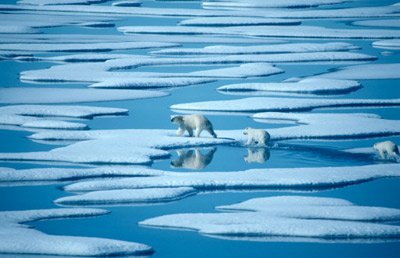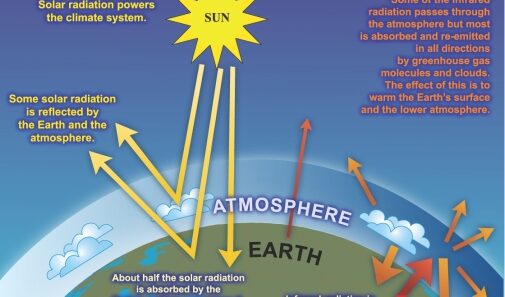The plight of polar bears amid the accelerating consequences of global warming prompts a pressing question: how do these majestic creatures adapt and strive for survival in a rapidly changing Arctic environment? As the icy realms they inhabit shrink and the landscape transforms, the adaptability of polar bears is put to a strenuous test. The following exploration delves into their adaptive strategies and the overarching struggles faced in the battle against climate change.
Polar bears (Ursus maritimus) epitomize the essence of the Arctic wilderness, thriving in conditions that are increasingly rendered inhospitable by human-induced climate changes. These magnificent mammals are not just iconic symbols of the Arctic but also critical indicators of environmental health. With the ice melting at an alarming rate, their existence is intricately tied to the very ecosystem that is now at risk.
At the core of this discussion lies the polar bear’s remarkable adaptability. They possess a suite of physiological and behavioral traits that allow them to navigate the harsh realities of an unpredictable environment. Their thick insulating fur and a layer of blubber, which can reach up to four inches in thickness, facilitate thermal regulation. This adaptation is quintessential for surviving the frigid temperatures of the Arctic. However, as sea ice diminishes, these bastions of insulation become less effective when bears are forced to swim for extended periods or search for food on land.
What happens when the ice melts too quickly for the bears to hunt effectively? Their primary source of sustenance—seals—depends on stable sea ice for breeding and resting. Without this critical habitat, polar bears face a dire conundrum. Their hunting grounds are receding, leading to a phenomenon known as “nutritional stress.” The bears are required to swim expansive distances to find food, which can lead to exhaustion, malnutrition, and ultimately, lower reproductive success. This condition poses a significant challenge to the population, as fewer cubs survive to adulthood.
The behavioral adaptations of polar bears are equally compelling. In response to the diminishing sea ice, these bears have begun altering their hunting strategies. They are increasingly venturing onto land in search of food, scavenging through human refuse or preying on alternative sources. While this opportunistic behavior may provide short-term relief, it is not a sustainable solution. The fundamental diet of polar bears primarily consists of fatty seals, which are crucial for maintaining their energy levels. Relying on less favorable food sources compromises their health and ability to reproduce.
In addition to hunting alterations, polar bears exhibit changes in their movement patterns. They have adapted to cover significant distances in search of prey, moving farther inland than previously observed. This strategy, however, presents its own set of challenges. As they push into human-populated territories, conflicts arise, leading to increased mortality rates due to human-wildlife interactions and potentially affecting local ecosystems.
Interestingly, polar bears also display a remarkable ability to fast for extended periods. During the summer months, when sea ice diminishes, they enter a state of fasting or “walking hibernation.” This adaptation allows them to conserve energy until the conditions improve. However, the increasing length of ice-free seasons exacerbates food scarcity, intensifying the urgency of this issue. The ability to fast will be tested to its limits as the climate crisis escalates.
Another fascinating aspect of polar bear survival in the face of climate change is their reproductive strategies. Female polar bears exhibit delayed implantation; they can control when their embryos implant in the uterine lining. This remarkable adaptation allows them to time the birth of their cubs for when sea ice conditions are optimal for nursing. As climate conditions become more erratic, however, this timing becomes critically important. If environmental conditions fail to align with their reproductive cycle, the survival of the cubs is jeopardized.
Yet, the overarching question remains: can these adaptations keep pace with the relentless march of climate change? Current projections indicate that Arctic sea ice may continue to diminish, leaving polar bears with fewer options for survival. The latest research suggests potential dire outcomes if global temperatures rise beyond certain thresholds. The effects of climate change ripple throughout the ecosystem, threatening not only polar bears but also countless other species that rely on the same habitat.
Conservation efforts are paramount to mitigate these threats. International agreements, habitat protection, and innovative conservation strategies are being employed to safeguard polar bear populations. Efforts range from reducing greenhouse gas emissions to creating wildlife corridors that facilitate safe movement for these bears. The engagement of local communities in conservation and awareness initiatives helps foster a cooperative approach to coexistence with wildlife.
As the Arctic community grapples with these challenges, the resilience of polar bears serves as a reminder of a broader truth: the fate of species is intertwined with environmental stewardship. The fight against climate change requires collective action from governments, organizations, and individuals alike. The time to act is now; the survival of polar bears—and indeed the future health of our planet—hangs in the balance.
In closing, the adaptations of polar bears amid the challenges posed by global warming not only highlight their resilience but also serve as a lens through which we can examine the broader implications of climate change on our planet’s ecosystems. Are we prepared to confront the challenges of climate change, or are we, like the polar bears, swimming against an unyielding tide? The answers to these questions will define not just the fate of polar bears but the future of our shared environment.







